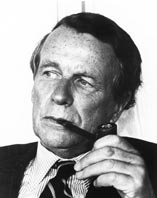
Matthew Leitch, educator, consultant, researcher
Real Economics and sustainability
Psychology and science generally
OTHER MATERIALWorking In Uncertainty
David Ogilvy, advertising giant
David Ogilvy was a chef, a diplomat, a farmer, and a researcher at Gallup before founding the advertising agency Ogilvy, Bensen & Mather in 1949 at the age of 38. By 1983 it was the fourth largest advertising agency in the world. During one period of 7 years his agency won every client pitch it made. One day a man arrived without an appointment and just gave them the IBM account.
Ogilvy's talents included great copywriting skills and a huge amount of charm. However, something that distinguished his approach from most other advertising agencies was his focus on using solid research to help make marketing decisions. He loved direct mail (or ‘junk’ mail as most people call it) because with direct mail it is possible to measure the response to advertising accurately. He could send slightly different advertisements to different groups of people and see what difference it made. He applied the same idea using reply coupons on page advertisements in newspapers and magazines, and used other forms of testing too.

This led to some discoveries that many people find surprising. For example, almost everyone who isn't involved in advertising professionally thinks that long copy (i.e. lots of words on an advertisement) must be a bad idea because ‘nobody will read a lot of text’. It is true that few people read a lot of text, even if it is interesting, well written text, but it is also true that the more they read the more likely they are to be persuaded to buy. When persuasiveness is taken into account it turns out that length of copy is not a big issue. Copy can be long or short. It all depends on what type of product it is, whether you have worthwhile things to say about it, and where the advertisement is shown.
Ogilvy learned that changing the words of a headline, for example, could increase sales many times over, but often in ways that were hard to predict. Therefore he preferred to test ideas instead of relying on intuition.
He also codified his research discoveries into over 100 rules of thumb to be applied to future advertisements. He identified techniques that were above and below average in their selling power. For example, to sell food on TV it is obvious that showing the food looking good is more effective than not showing the food, but it also turned out that showing food in motion is usually better still (e.g. chocolate sauce being poured).
| Working In Uncertainty observations |
It is normal human nature to think that we can predict the future better than we actually can. This extends to thinking that we understand other people and can predict what will persuade them. David Ogilvy understood the real limits of our ability to do this and used scientific research to achieve better results. |
|---|
(Source of information: ‘Ogilvy on Advertising’ by David Ogilvy, published 1983 by Pan Books Ltd.)
Made in England